Tokina 2X Tele Converter, RMC.
Tokina 2X Tele Conv is a Tele Converter, for MINOLTA MD mount SLR cameras produced by Tokina Optical Co. Ltd.. Was designed as booklet report, for telephoto and tele-zoom lenses above 70mm range. You must attach it between the camera mount and the lens in use. Producer declare lens speed down 2-stops, when used.
Tokina 2X Tele Converter was first introduced PROBABLY (not certain sources) at the end 1970s, and has since been discontinued. However, you can still find it used for various camera mounts such as: Canon EF, Nikon F, Pentax K, Minolta MD and more.
RMC stands for “Repro Multi-Coating ” which is a type of lens coating developed by the Japanese manufacturer Tokina.
RMC is designed to reduce lens flare and ghosting. Which can occur when light reflects off the surface of lens elements. Causing unwanted reflections and artifacts in the image.
They built this specimen for Minolta SR (MD, MC).
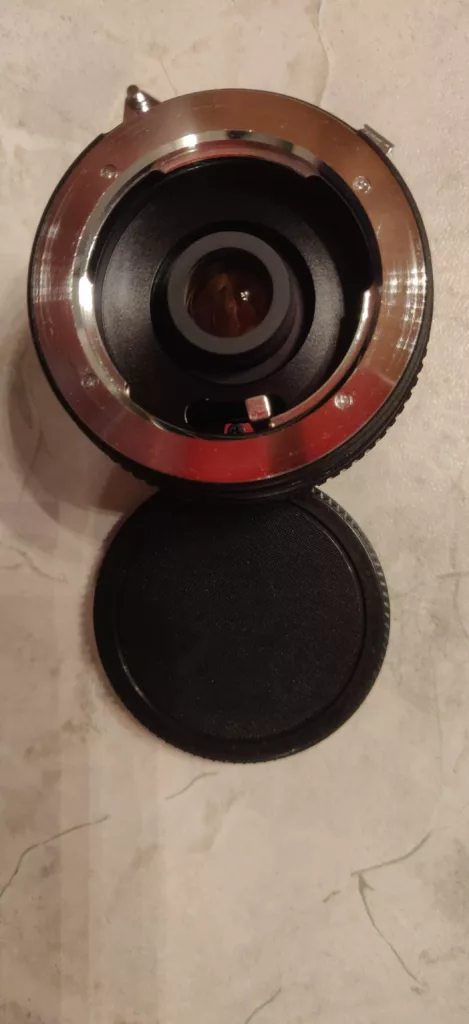
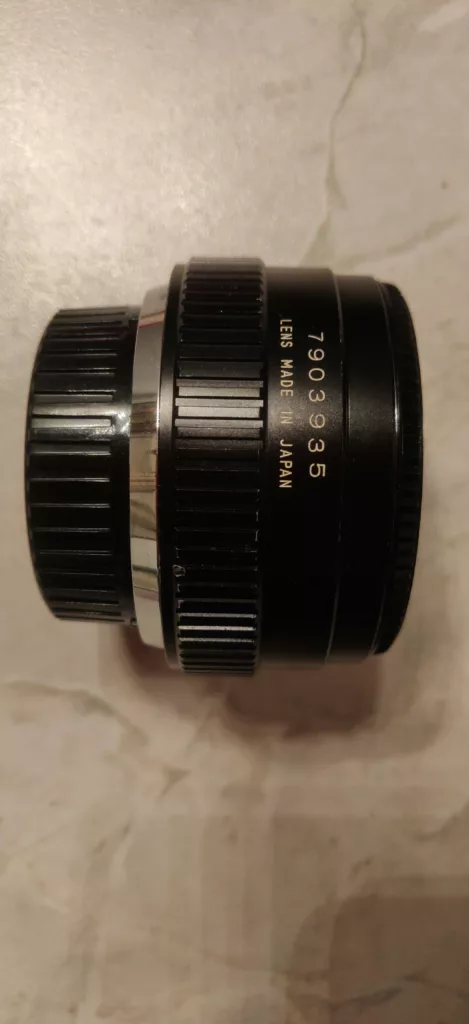
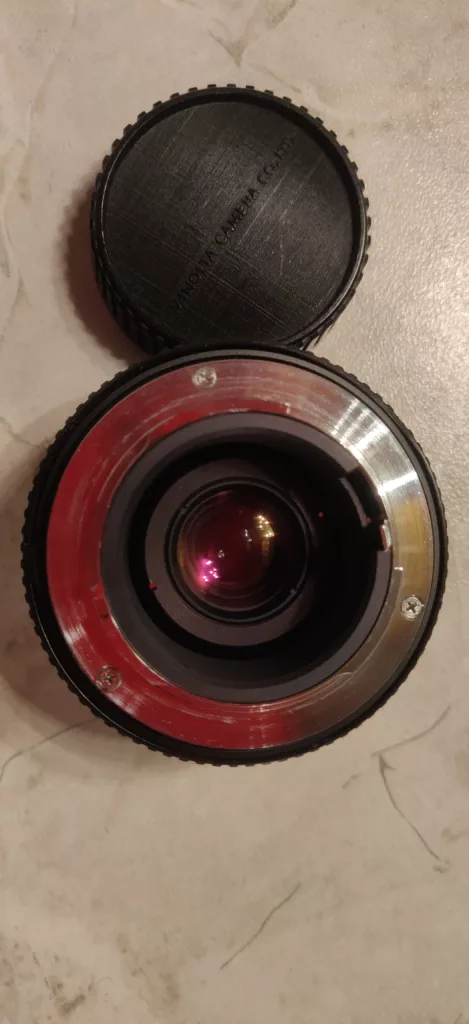
Specs: Focal Tele Converter 2X | Lenses: 6 in 4 groups | Min. Focus: Same of main lens | Weight 130gr ! Length 34,5mm
Personal Evaluation: Mechanical Quality 4,25 | Optical Quality 3,75 | Usability 3,5 | Price 4,0 | Bokeh NA
*** The evaluations refer to the specimen in my hands, and also to the use of the relative adapter ***
Photos taken with lens. Manual focus with MD/NEX adapter mounted on camera.
This TELE CONVERTER 2X, was my first purchase of optical converters, in the field of vintage optics. I’ve had converters before in the film camera era. I used the first teleconverter on a digital camera, obviously with an adapter to insert it into the E-mount of my cameras. The purchase was made at the end of April 2023, but it remained unused in a drawer for some time. Partly for reasons of time, but above all because the use of this object is all in all limited to specific situations and circumstances. Not so common for the photographs I like to take.
To be honest, I don’t have a precise idea of how valid it is or how useful it might be to me. The purchase was motivated by making my TOKINA 135mm more interesting and performing in good overall light conditions. Secondly, to try it together with the 50mm SIGMA MACRO to lengthen the focal length, despite losing 2-stops. Although I have not yet completed all the tests I want to do, to obtain an honest opinion… I can say that the best and most interesting use that I can express in January 2024 is related to its use with the SIGMA 50mm Macro F2.8. This is due to the overall size and weight, which is obviously less than using Tokina’s medium tele. But also and above all because by using it in macro photography for insects and butterflies, I’m able to maintain such a distance as not to scare, and scare away the subjects I intend to photograph so often. Obviously all in ideal light conditions, such as to largely compensate for the loss of 2-stops which is truly a lot in the field of macro photography. Considering the use with the medium telephoto, the weight and bulk often make it not practical and functional to manage. The use of a tripod is often necessary for correct focus on the subject, and also to avoid blurring in the frame. I plan to conduct more tests, especially with the MACRO lens, as I find the potential uses intriguing, provided that ideal lighting conditions are available. The 50mm macro becomes a 100mm and this can be useful in some circumstances. For example for butterflies. We’ll see if next spring/summer will allow me to do further tests. However, I don’t think I will do any more tests with the TOKINA 135mm considering the results achieved to date are absolutely poor and of low quality.
March 2024 – I wanted to try photography of small animals again, including small birds. Although the photograph (Prunella modularis) is not a masterpiece. I took a quite good photograph using the 2X converter on the 135mm medium telephoto lens. I have not retouched the photograph in any way. The shooting distance is about 5 meters, a good sunny day in late winter. Maybe it’s worth doing more tests, even if I think that at greater distances freehand photography is very, very complicated to achieve. If you’re interested, then follow this specific page. I will try again and test myself again. To understand if it is also easier to take good quality photographs, perhaps also using a tripod. – Fringilla Montifringilla photograph was taken at an approximate distance of 7/8 meters in low light conditions, because it was late afternoon. Again a handheld photograph. – Evidently I am stubborn, and I still try and practice, (all handheld photos): Cyanistes caeruleus, taken at a distance of about 8 metres, in the early afternoon in good light… Anthocharis cardamines, taken at a distance of about 2 metres, in the morning in good light…
April 2024 – I finally managed to find the time to take some photographs with the SIGMA 50mm F2.8 MACRO lens, which is what I really wanted to test since purchasing this teleconverter. I will gradually publish the photos that I will take. – Apis mellifera, taken at a distance of about 80|90 centimetres, at the morning in a very good light…
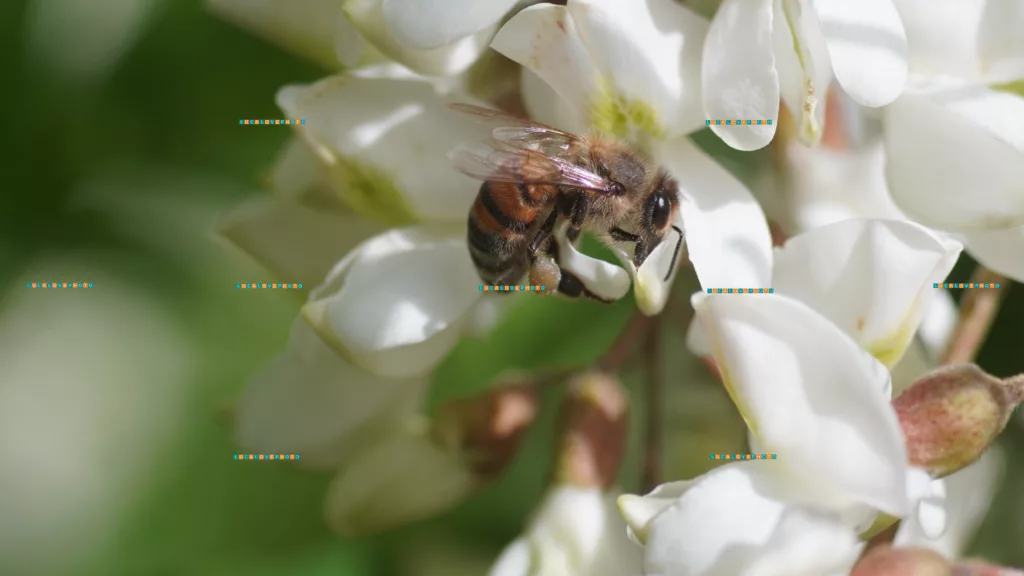
Apis mellifera, L.
European honey bee, is the most common of the 7–12 species of honey bees worldwide.
Sony Alpha 6400 – Sigma 50mm F2.8 – F8 (it means F4 selected) – 1/1000 – ISO 500 – 2X Converter applied – Hood applied to lens – AWB auto – Handheld photo.
Sunny – Date: April 29, 2024
Location: Trezzo sull’Adda (Mi) – Italy
Anthocharis cardamines, L.
Orange tip, is a butterfly in the family Pieridae.
Sony Alpha 6400 – Tokina 135mm F2.8 – F5.6 (it means F2.8 selected) – 1/500 – ISO 100 – 2X Converter applied – Hood applied to lens – AWB auto – Handheld photo.
Sunny – Date: March 24, 2024
Location: Trezzo sull’Adda (Mi) – Italy
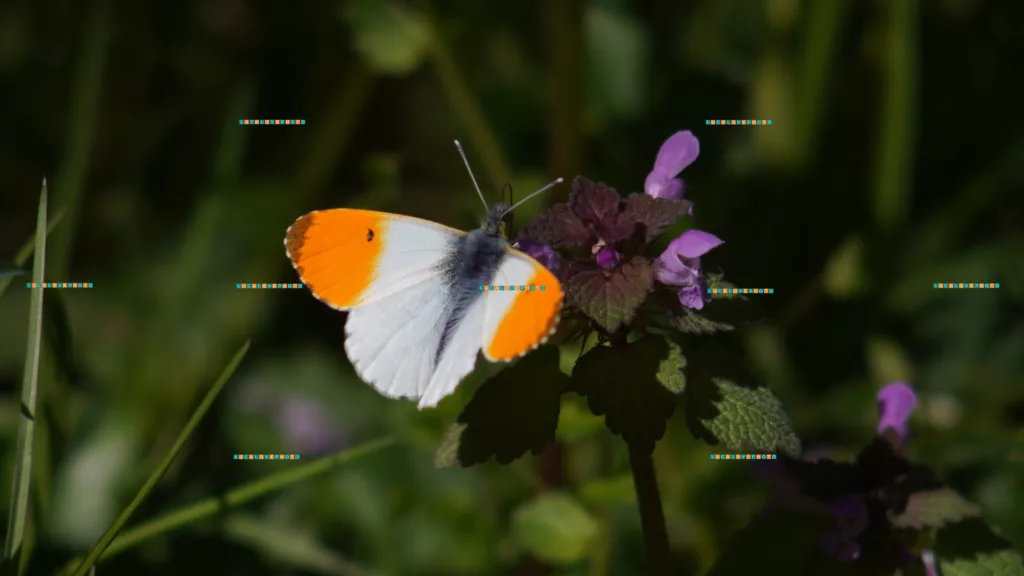
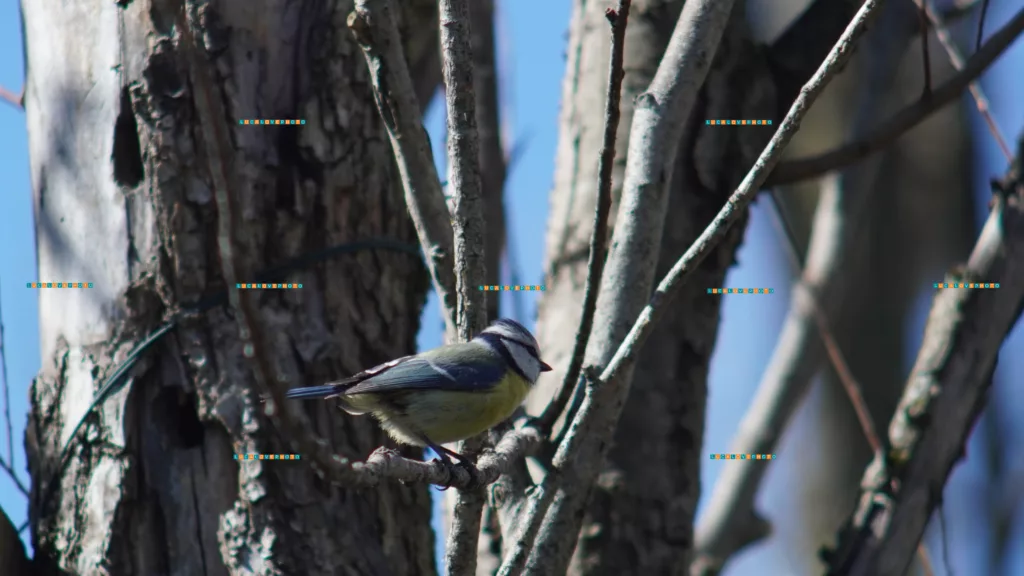
Cyanistes caeruleus, L.
The Eurasian blue tit, is a small passerine bird in the tit family, Paridae.
Sony Alpha 6400 – Tokina 135mm F2.8 – F5.6 (it means F2.8 selected) – 1/800 – ISO 500 – 2X Converter applied – Hood applied to lens – AWB auto – Handheld photo.
Sunny – Date: March 24, 2024
Location: Trezzo sull’Adda (Mi) – Italy
Fringilla montifringilla, L.
Brambling is a small passerine, bird in the finch family Fringillidae. Widespread and migratory, often seen in very large flocks.
Sony Alpha 6400 – Tokina 135mm F2.8 – F5.6 (it means F2.8 selected) – 1/500 – ISO 640 – 2X Converter applied – Hood applied to lens – AWB auto – Handheld photo.
Sunny – Date: March 17, 2024
Location: Trezzo sull’Adda (Mi) – Italy
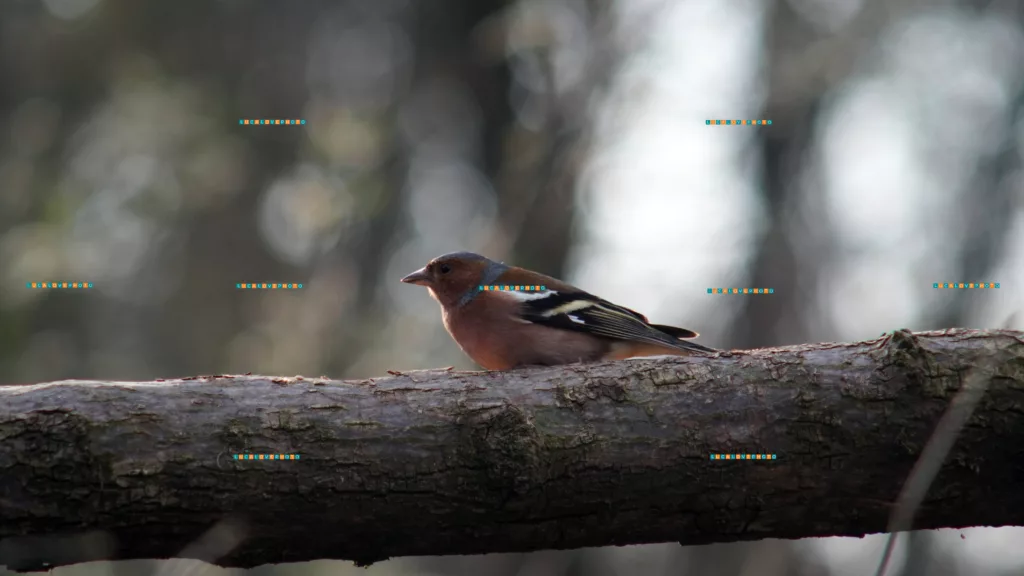
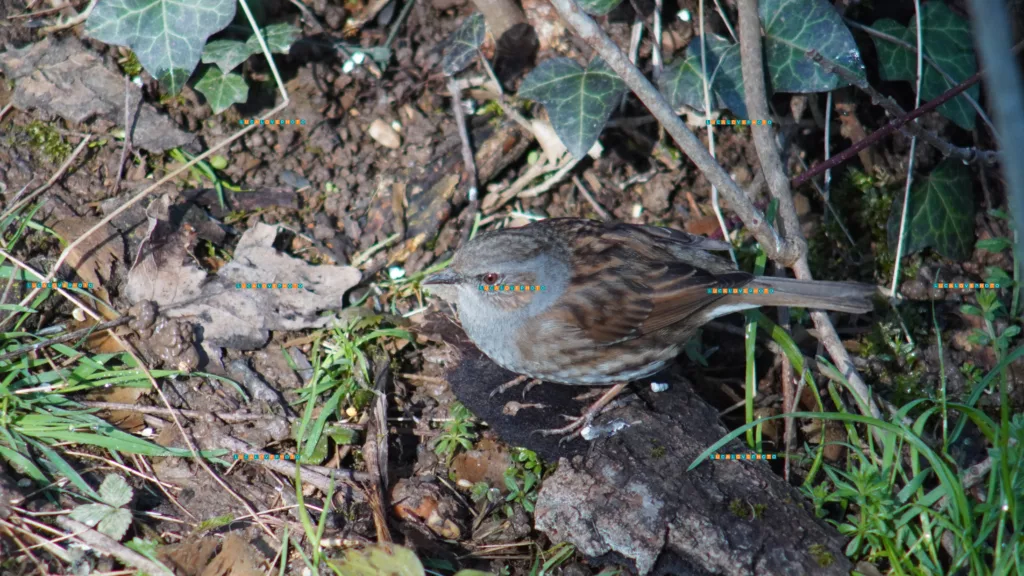
Prunella modularis, L.
Dunnock is a small passerine, or perching bird, found throughout temperate Europe.
Sony Alpha 6400 – Tokina 135mm F2.8 – F8 (it means F4 selected) – 1/1600 – ISO 1000 – 2X Converter applied – Hood applied to lens – AWB auto – Handheld photo.
Sunny – Date: March 07, 2024
Location: Trezzo sull’Adda (Mi) – Italy

